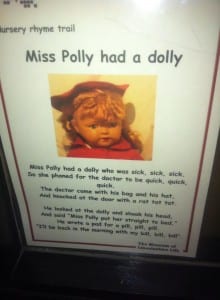As at this point in our process we have our initial ‘performance’ piece in mind (the taping around the bodies) we then decided to research into who’s bodies we were actually taping around, ‘Performance can function as both an innovative mode of enquiry and a research output’, this influenced myself to have a look on a family tree online software and find out who actually died in the disaster including Margaret. Margaret’s story had been our inspiration but we now wanted to join the facts together and ensure we knew as much information about the disaster as possible. I found a newspaper article from the LINCOLNSHIRE ECHO JUNE 1943 that had commented on the event,
‘Ten people were killed and 3 seriously injured when a plane crashed on houses in Highfield Avenue, Lincoln, early last night.
8 people – 5 members of the crew of the plane and 3 civilians were killed instantly and another member of the air crew and a child died later in hospital.
Civilians killed were Margaret Marriot age 11 of 25 Highfield Avenue, Mrs. J. Thacker of 24 Highfield Ave and Miss Gwendoline Whitby age 42 of Hykeham Road, Lincoln. Laurie Thacker aged 4 who was admitted to hospital with burns died during the night.
The 3 injured who are detained in hospital are Harry Bishop of Highfield Ave., his wife Mrs. Esme Bishop and Anthony Thacker aged 3 also of Highfield Ave.
At hospital today, it was stated that all 3 were suffering from burns and are seriously ill.
A number of other people were injured but not detained in hospital.
4 houses, 2 on each side of the road Number 22, 24, 25, and 27 were totally wrecked. One house No. 23 was set on fire and burned out. No.27 was unoccupied.
From the wreckage of No. 24 the bodies of Mrs. Thacker and Miss Whitby were recovered. Miss Whitby, a friend of Mrs. Thacker was visiting Mrs. Thacker to look after her children. Of Mrs. Thacker’s 4 children, only the 2 boys were in the house. The two girls were away from home.
At No. 25 Margaret was in the house alone doing her homework. Her parents were at their allottment. Mr & Mrs Scrimshaw and their two young children along with Mr. & Mrs. Bishop were at home at 22 Highfield Ave. Mr. & Mrs Scrimshaw were injured but no detained in hospital.’
As a total of ten people were killed all together we wanted to ensure ten bodies were taped around during our performance, however what we found interesting was the fact that three of the ten were children and as there is three people in our group it made more sense to focus on the children, especially seen as Margaret our main focus was a child and also the fact the grandstand is now used as a play group centre for children we believe will create a strange juxtaposition.
We then visited Lincoln life Museum to discover what life was like during the 1940’s, we found a popular nursery song that children sung during this period called ‘Miss Polly had a Dolly’

This song had lyrics such as ‘call the doctor quick, quick, quick’ which have connotations of illness, therefore we wanted to incorporate this into our performance. We are going to sing the song slowly in a low tone and emphasise words such as ‘sick’ ‘doctor’ and ‘quick’ which is a big difference to how the song is usually sang, high pitched, loud and cheery, this was ispired by Mike Pearsons idea to ‘involve dramaturgical structures that juxtapose text and narratives of different orders and in a variety of voices- personal, expert and popular.’ (Pearson, 2011)


